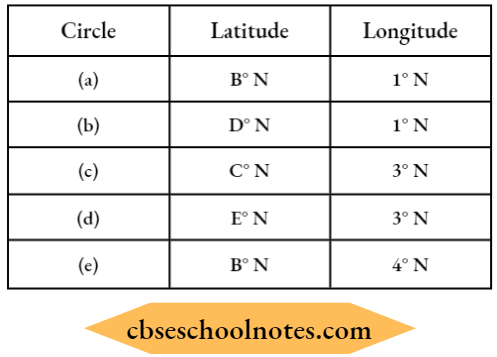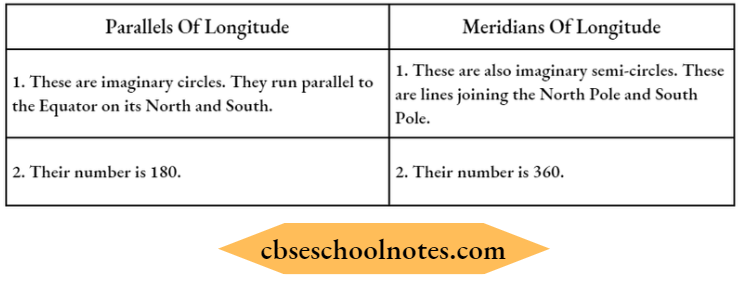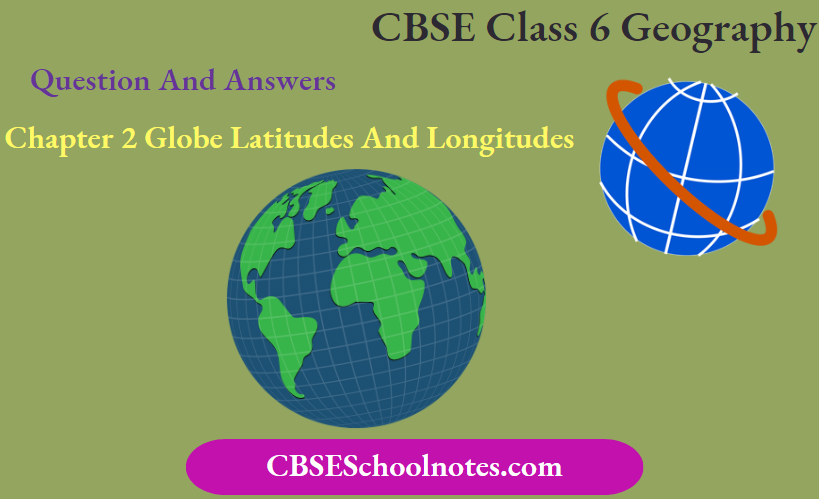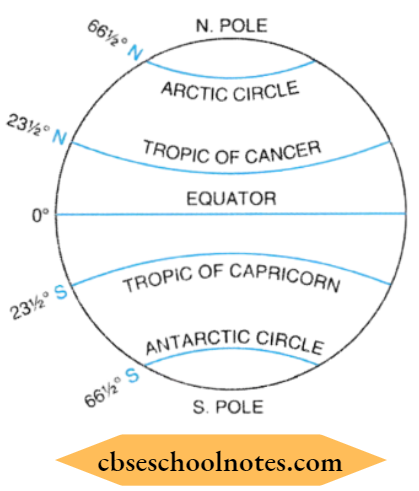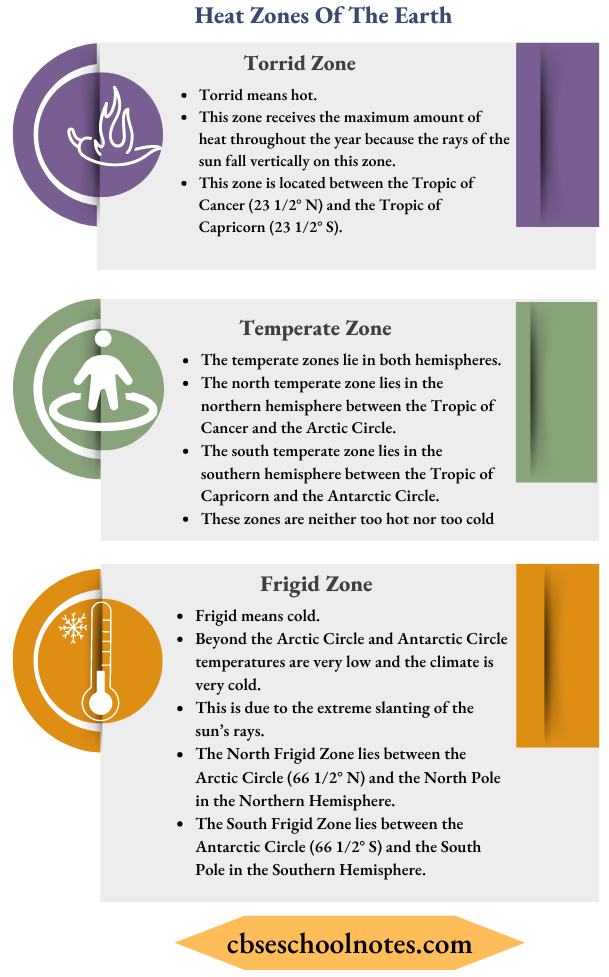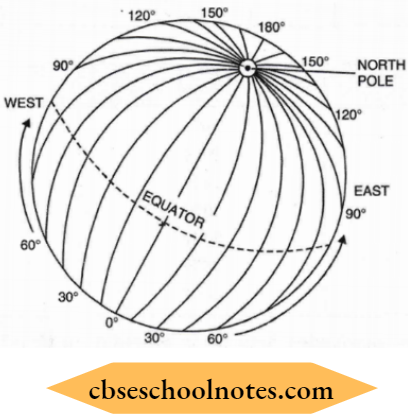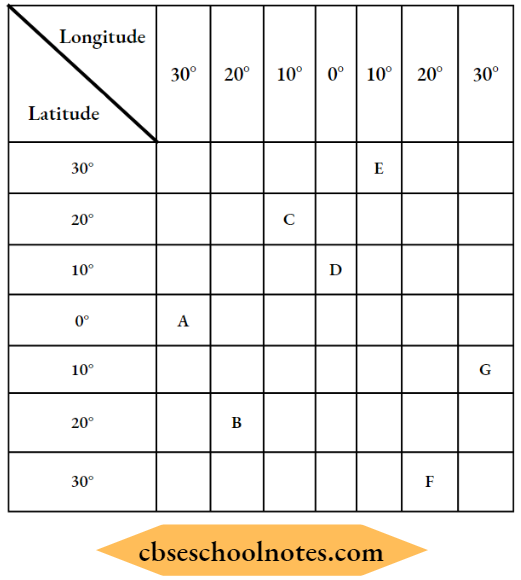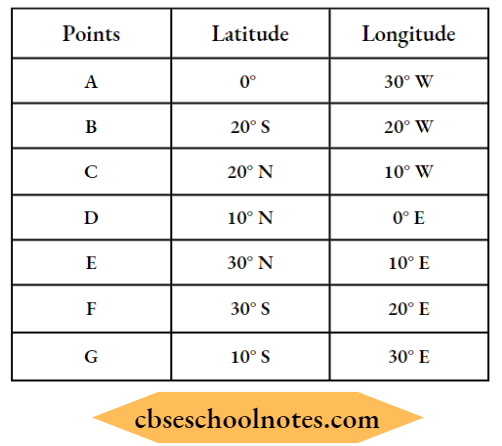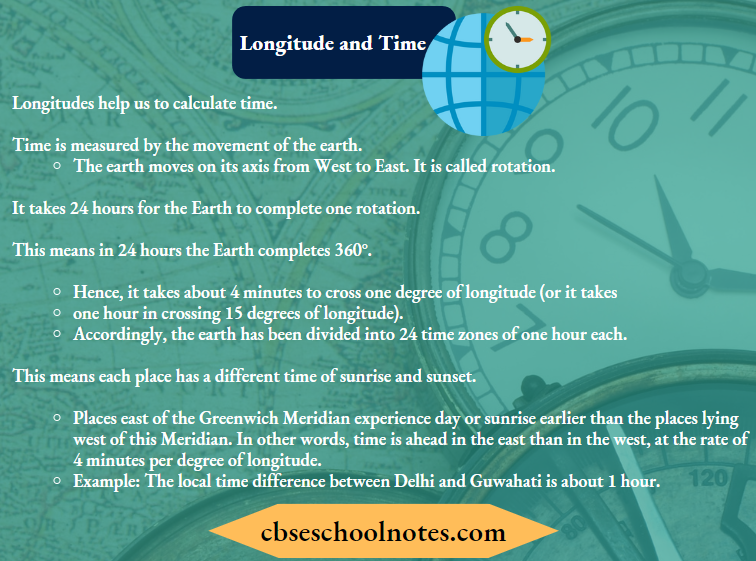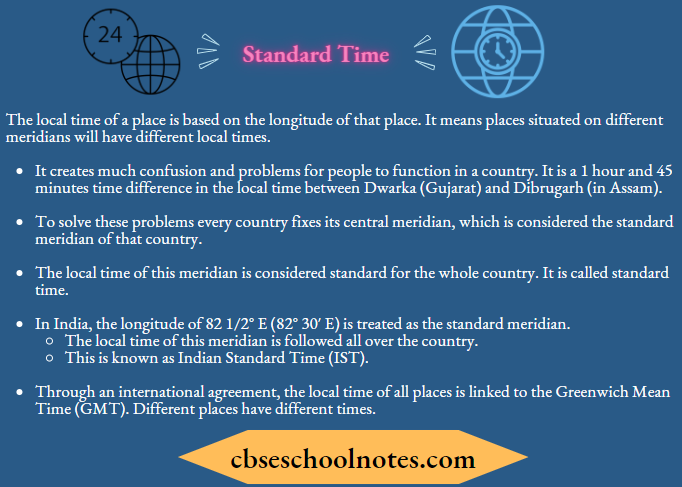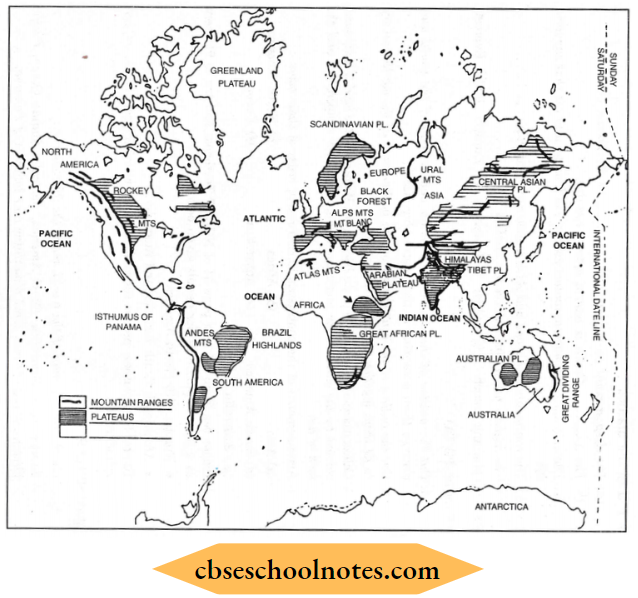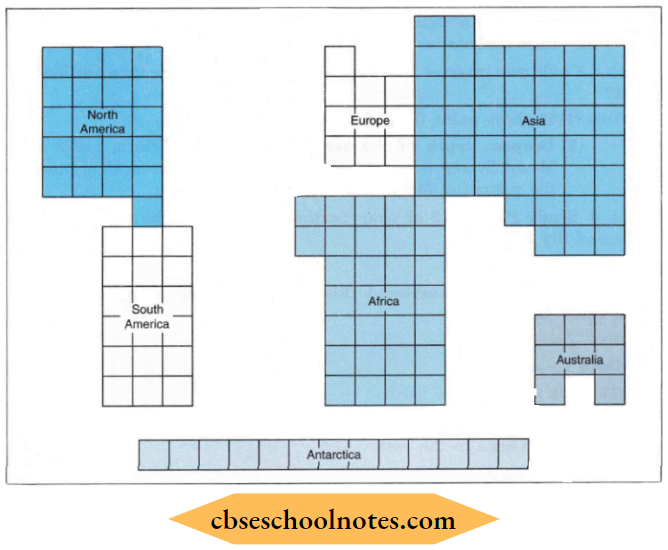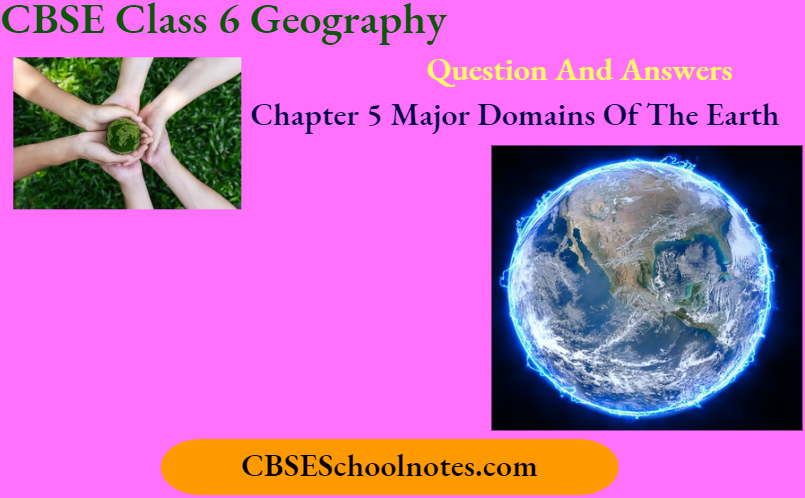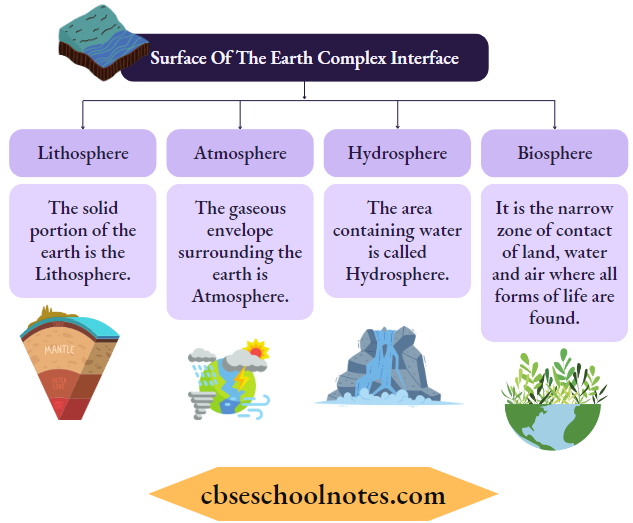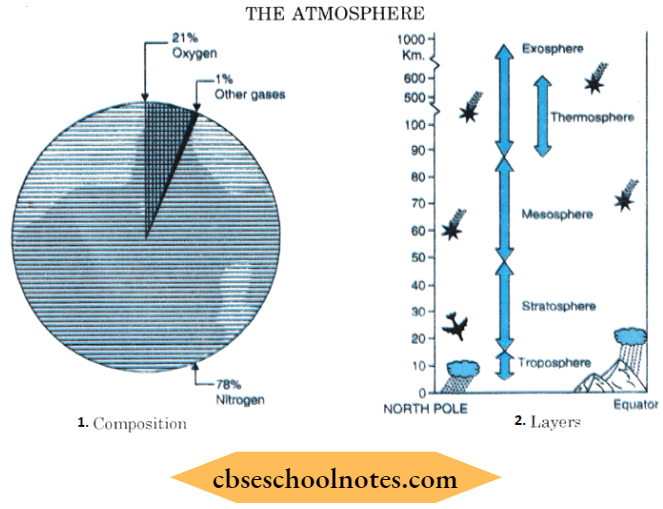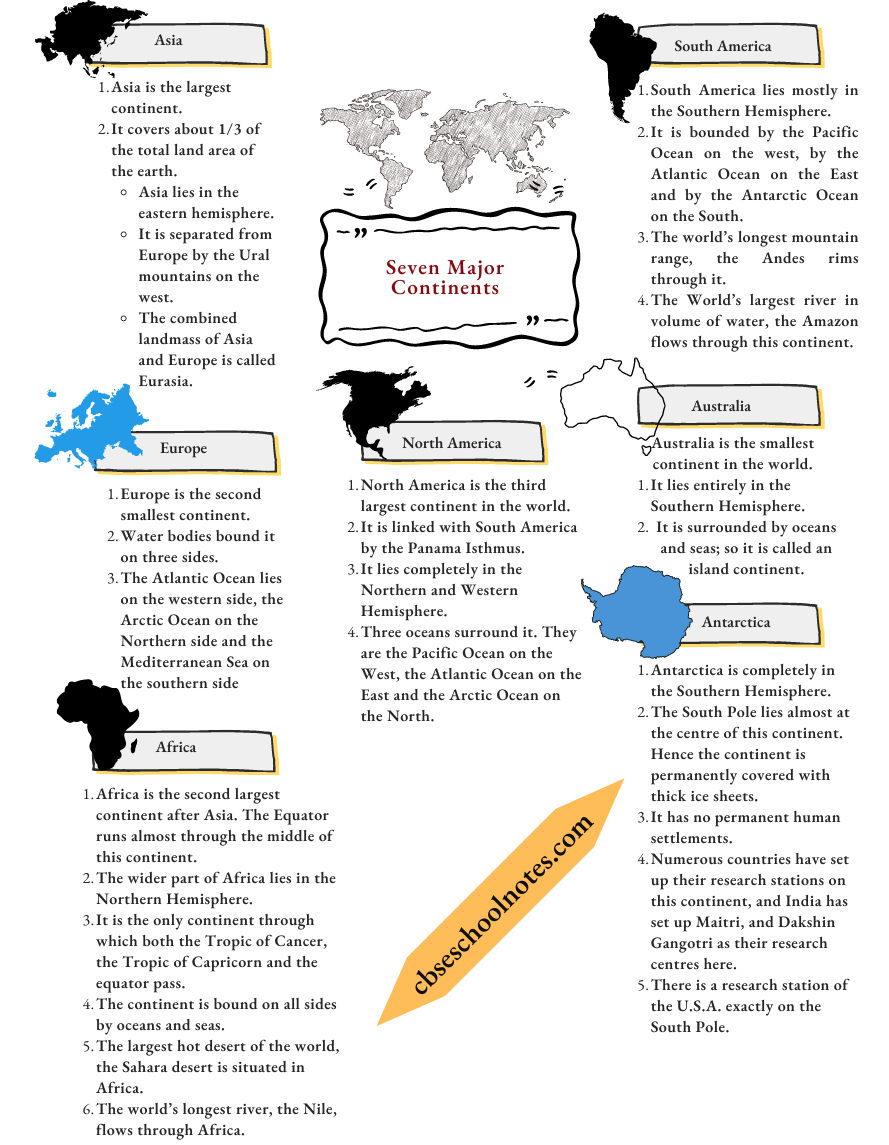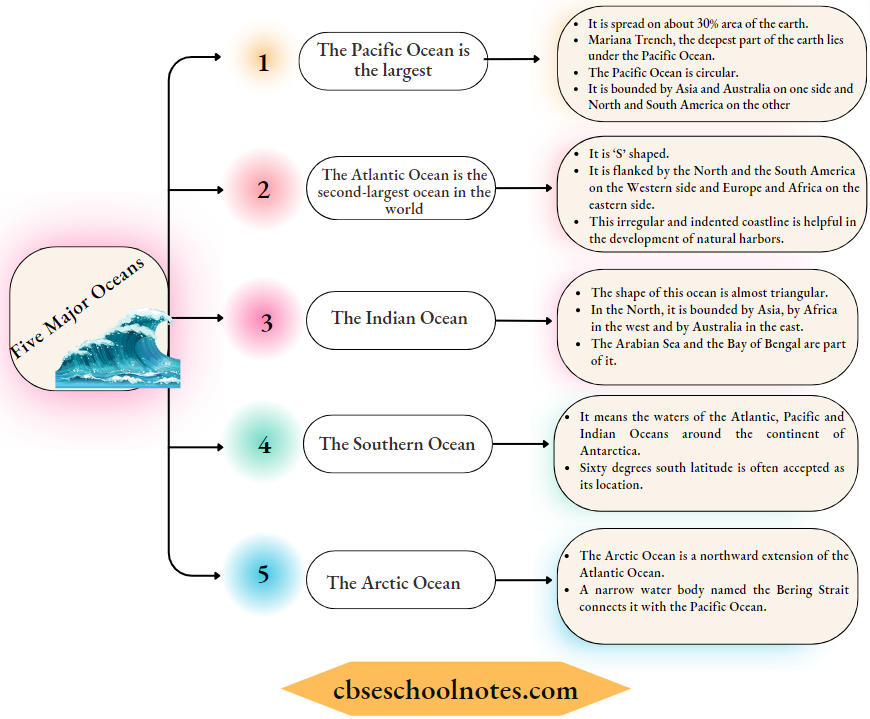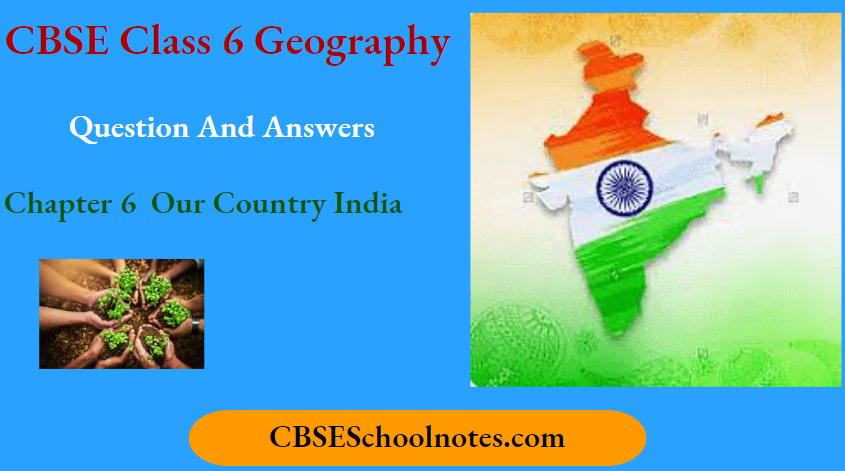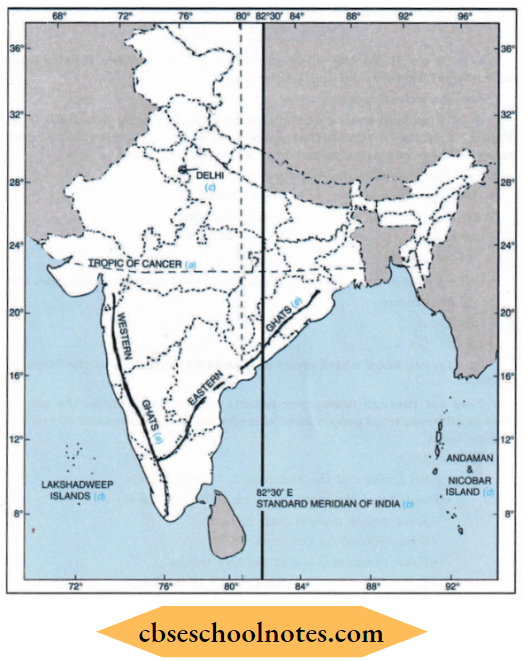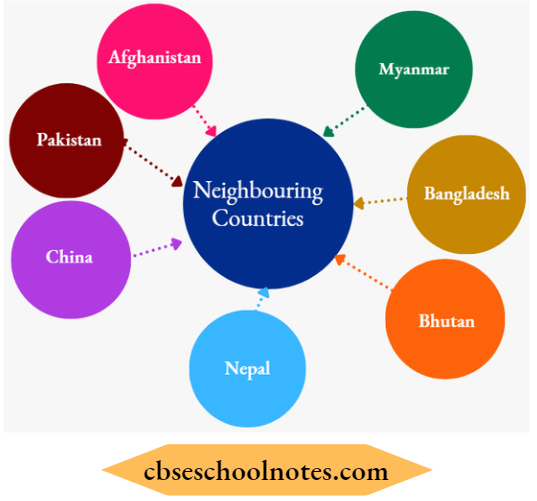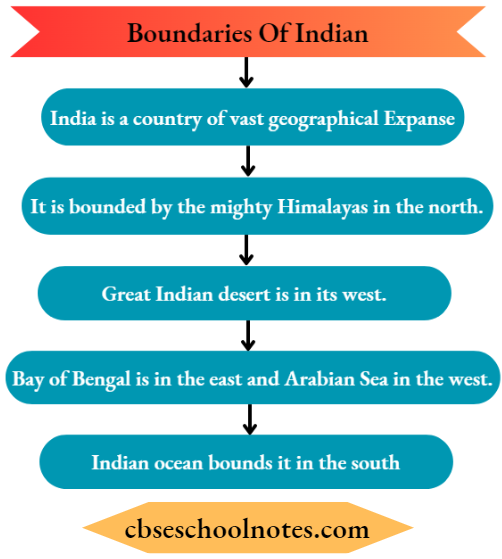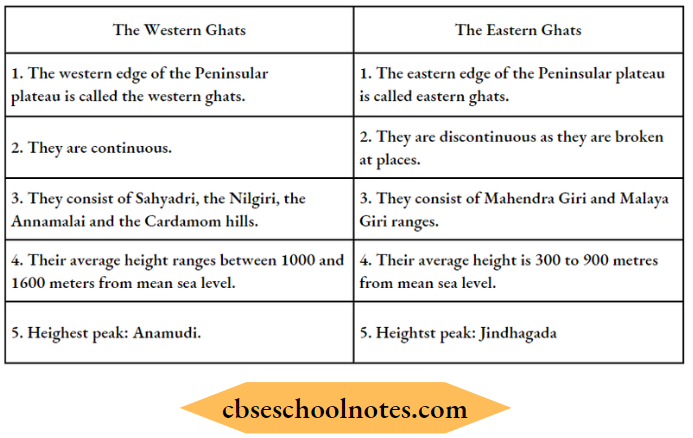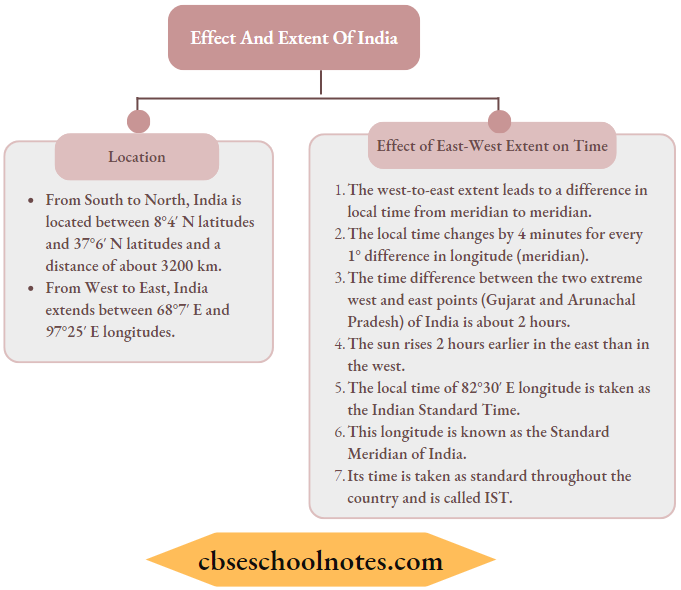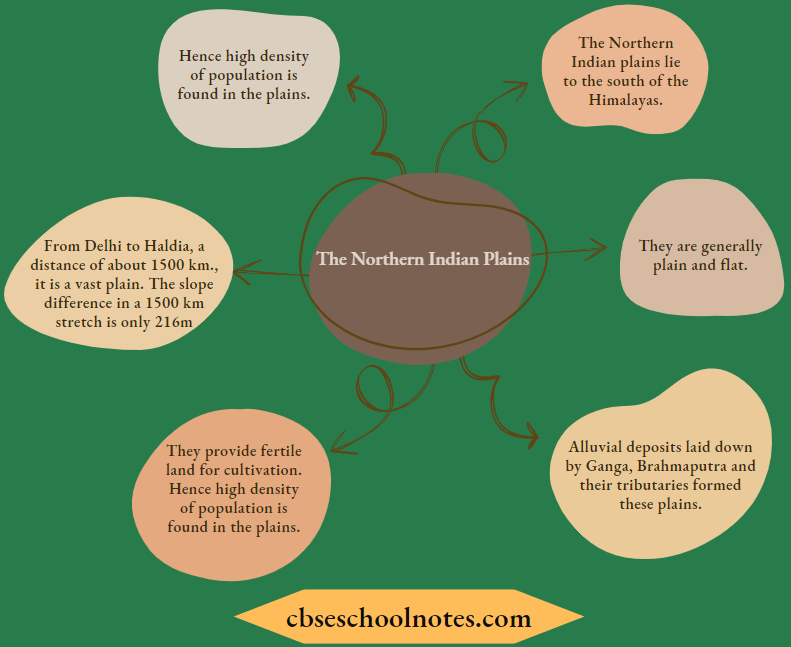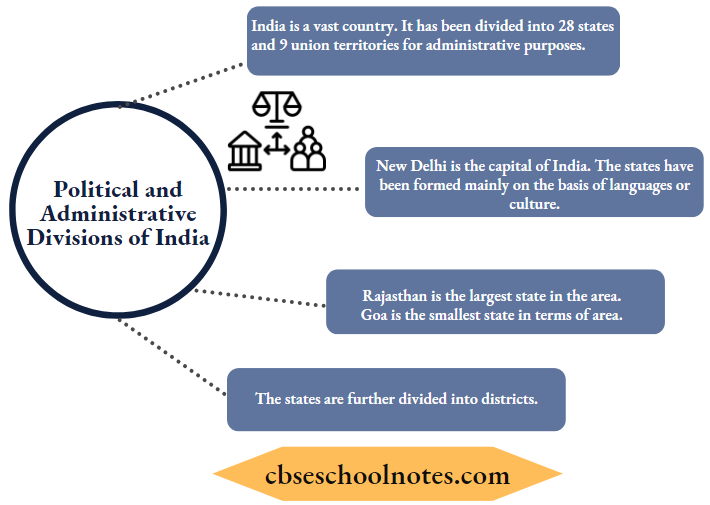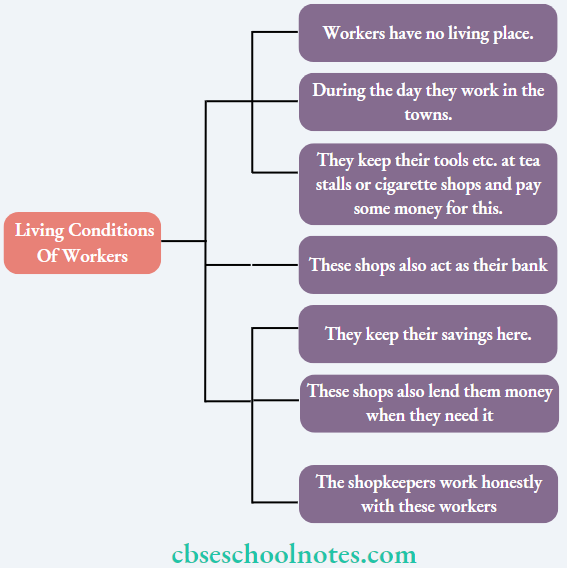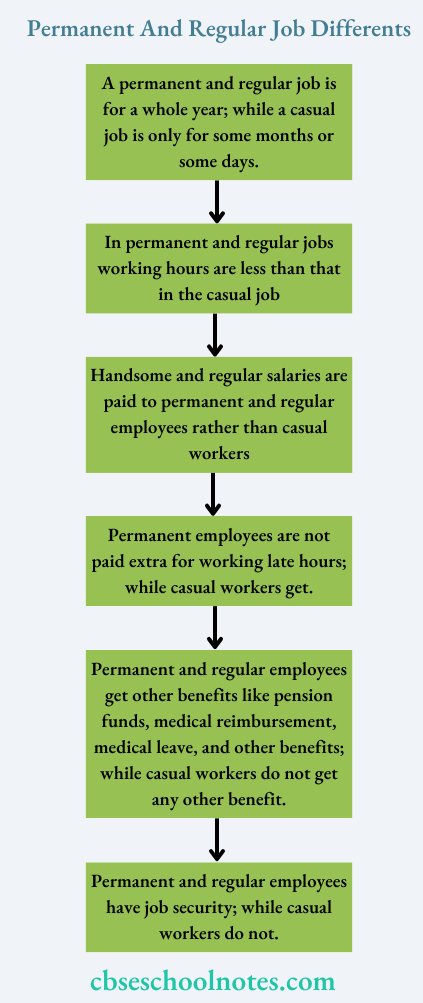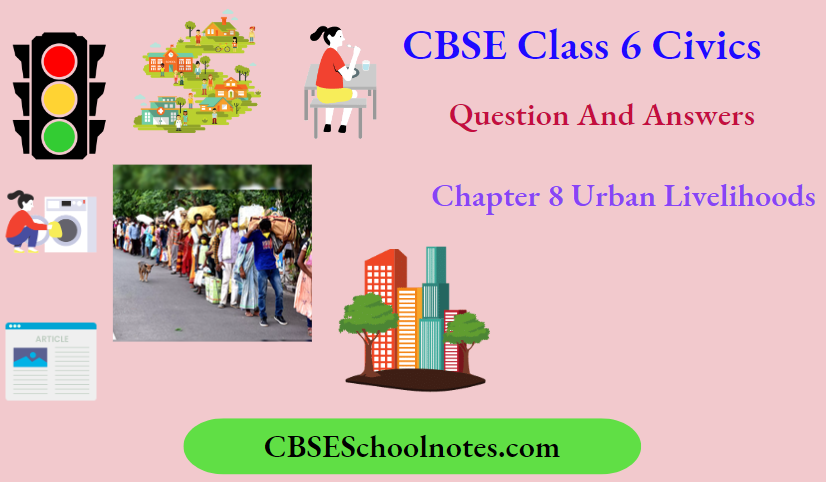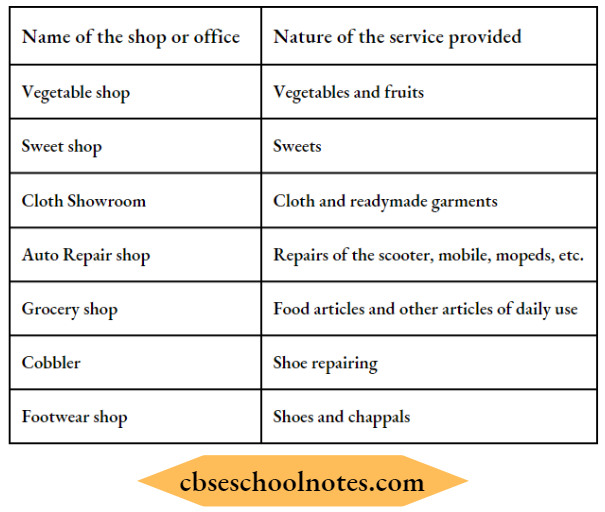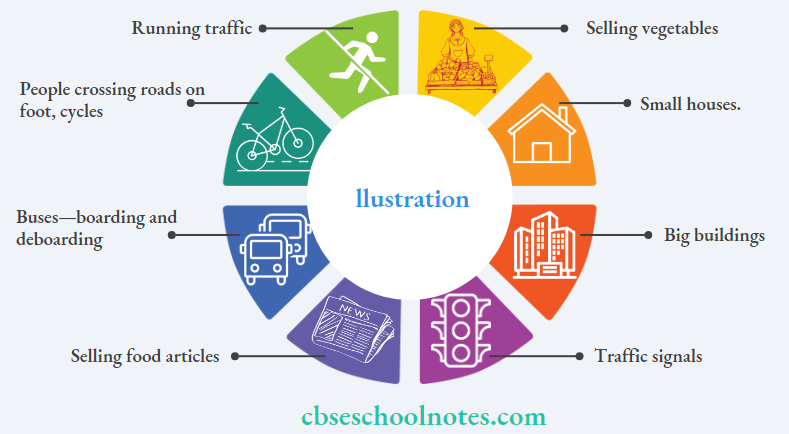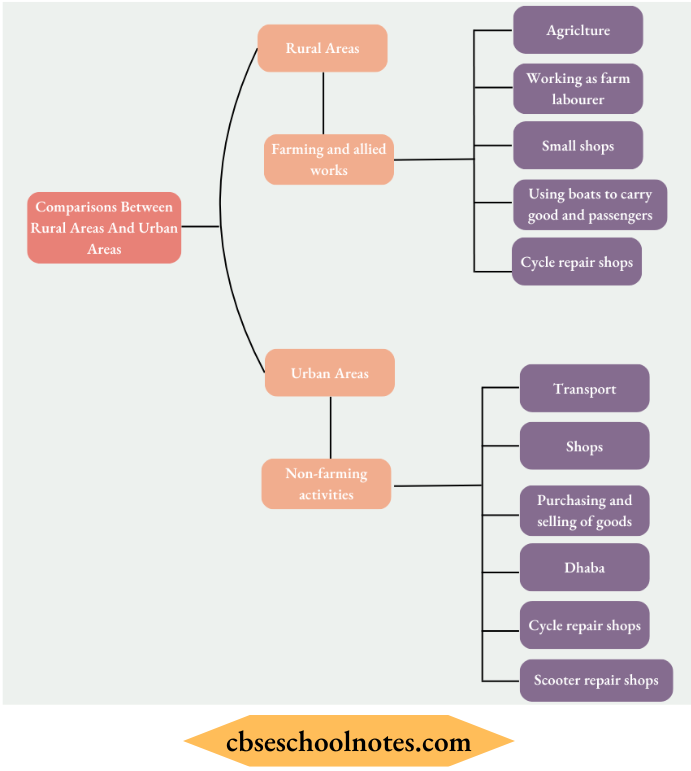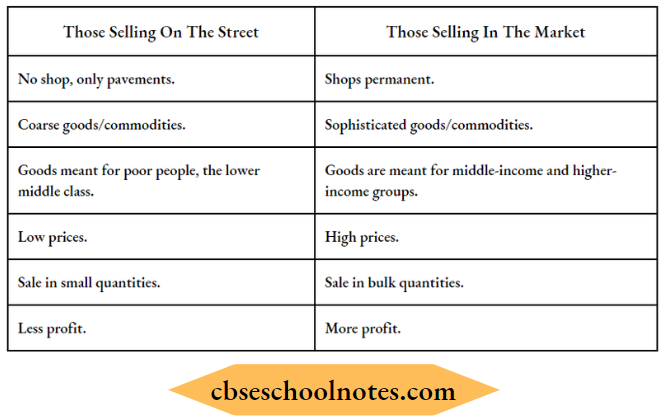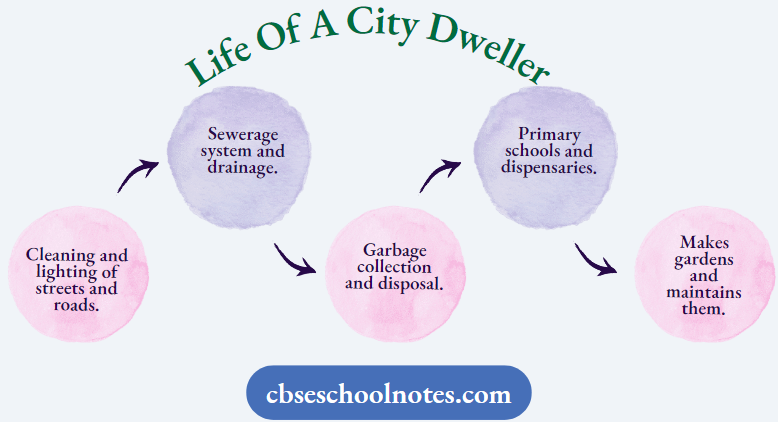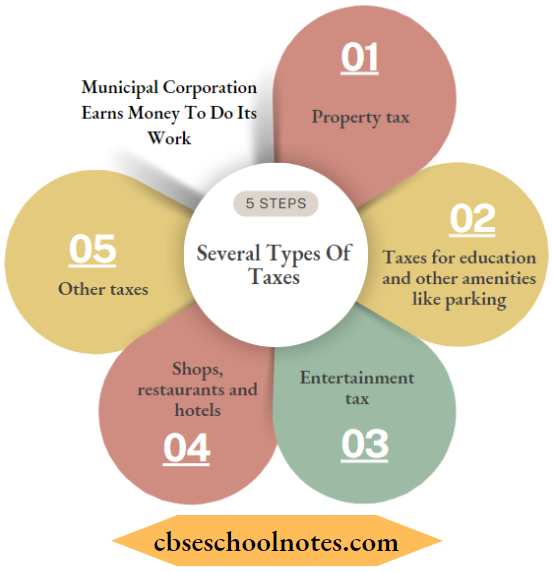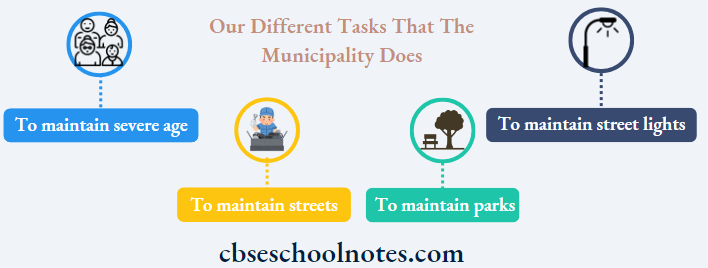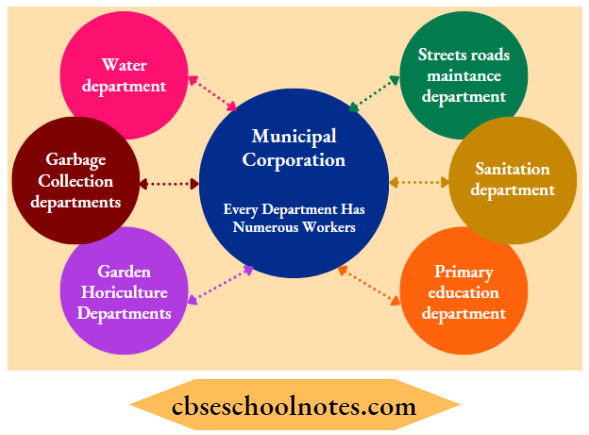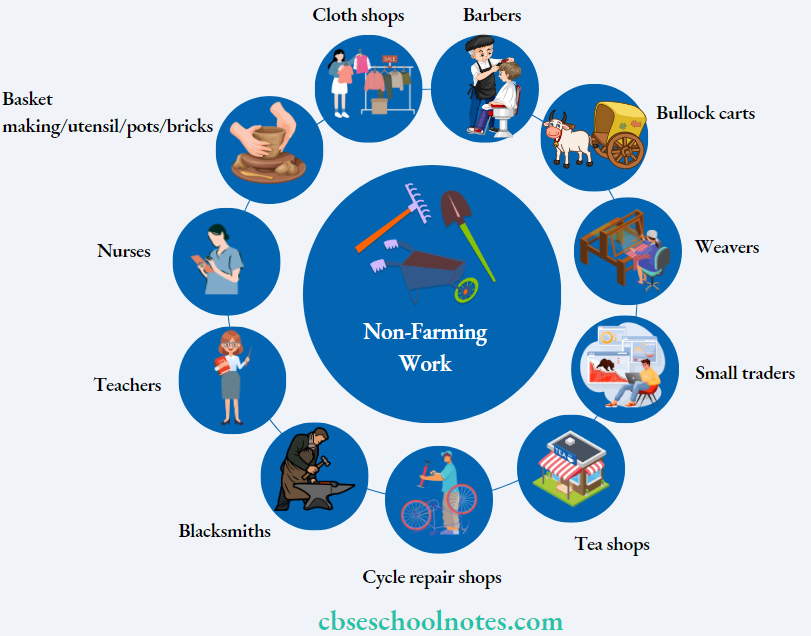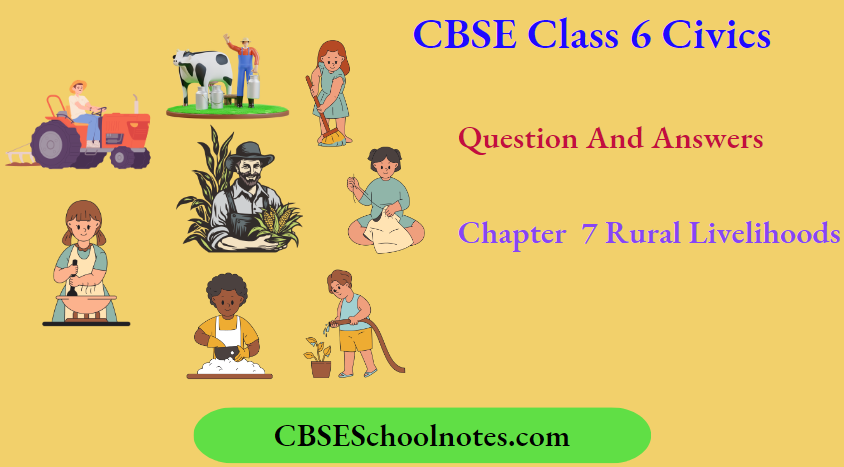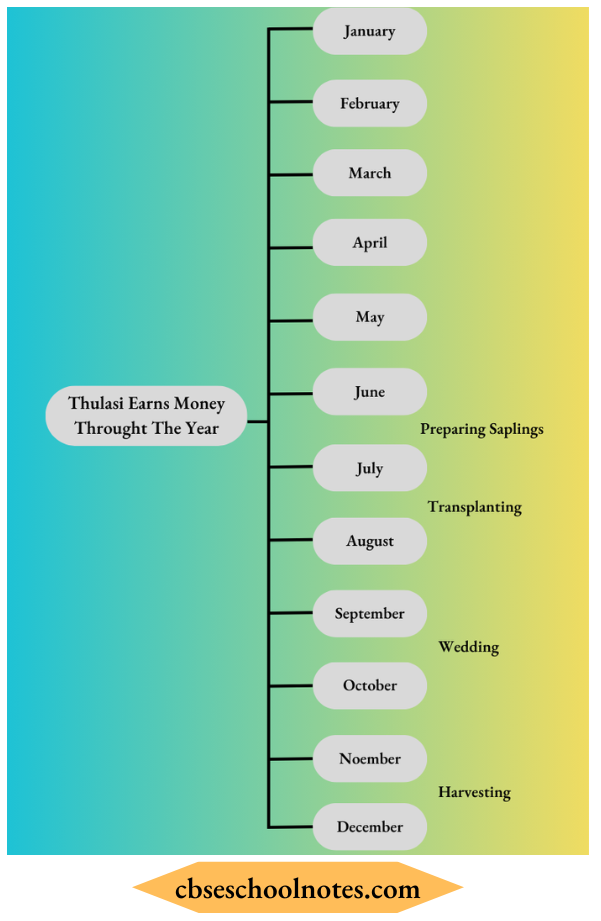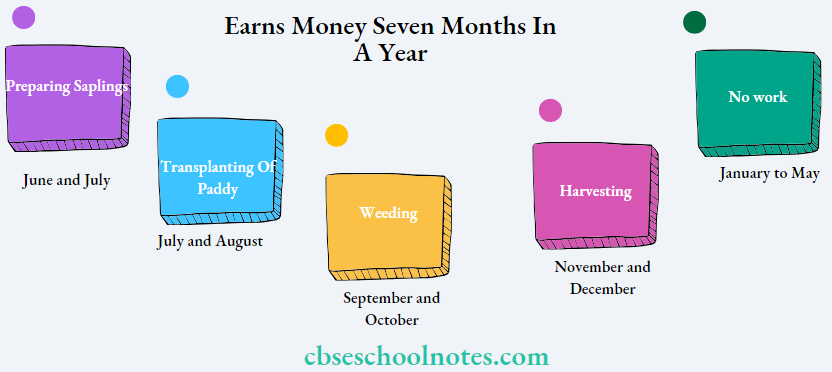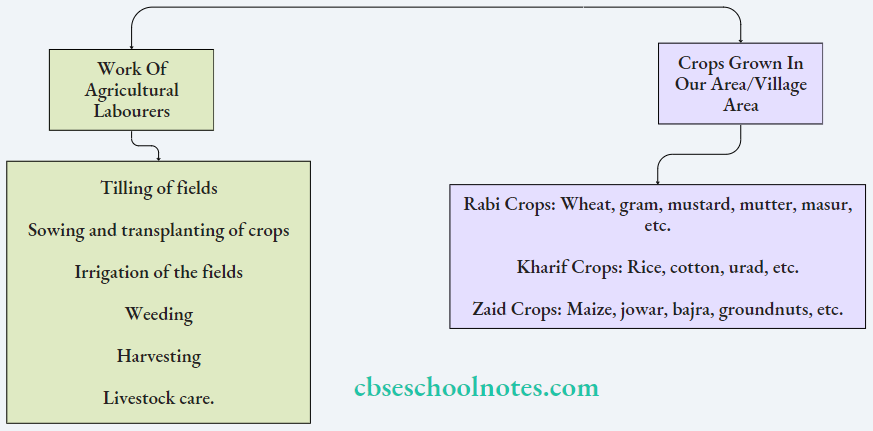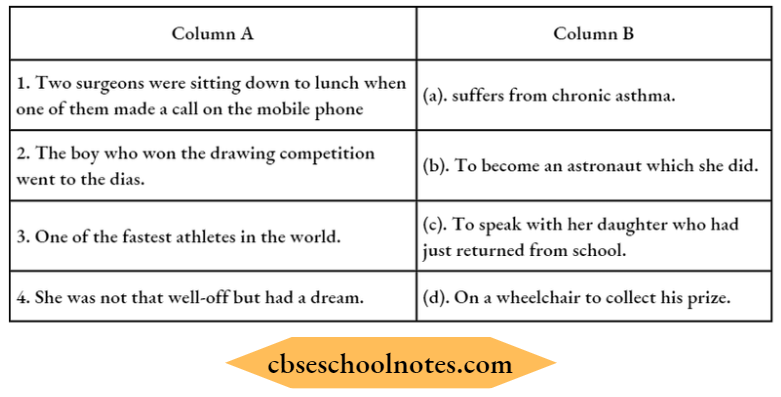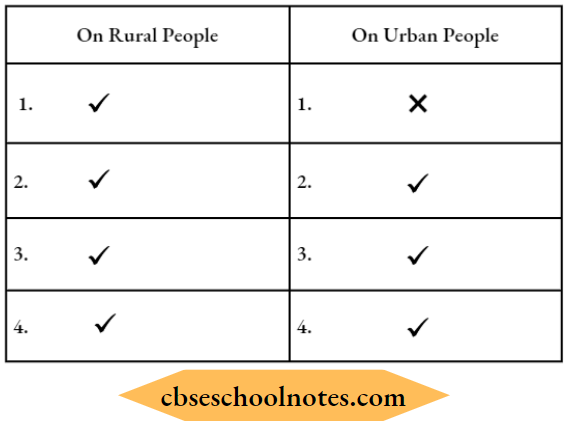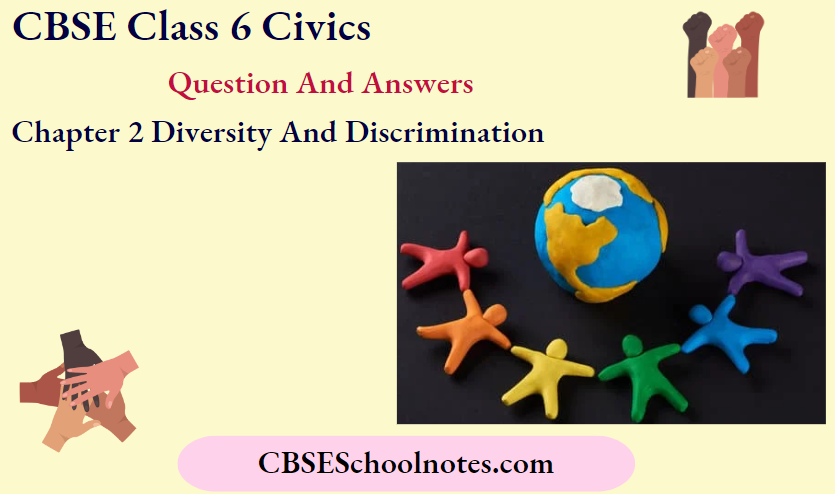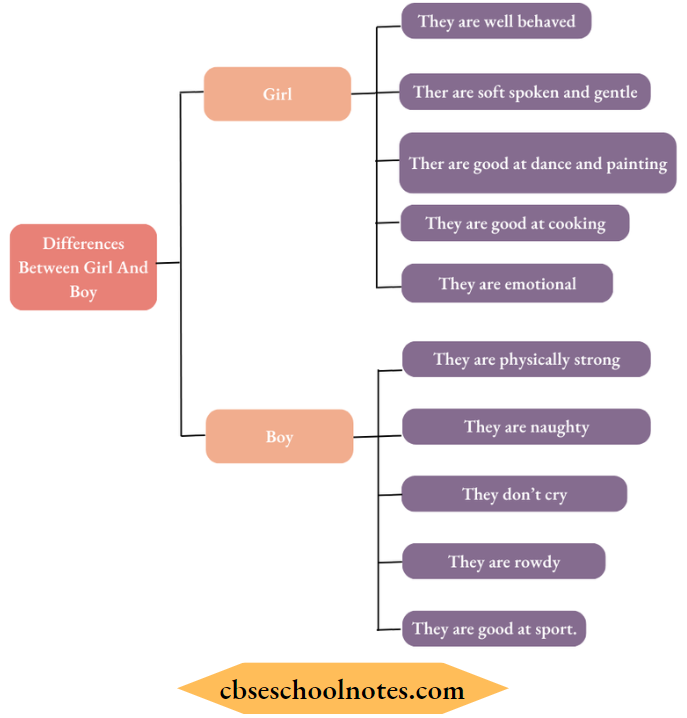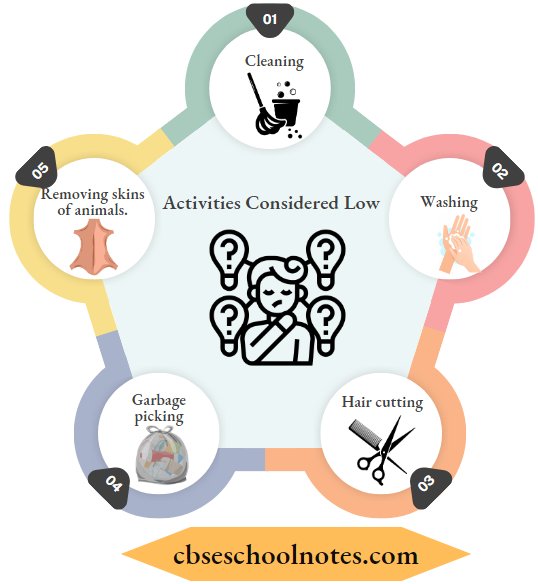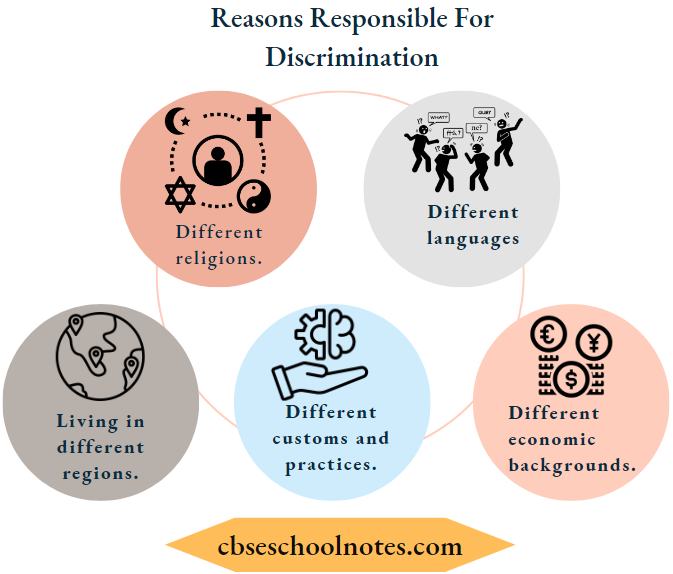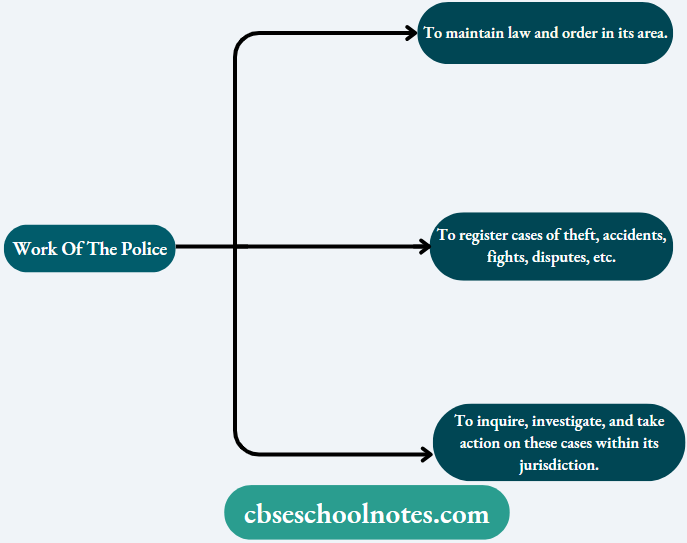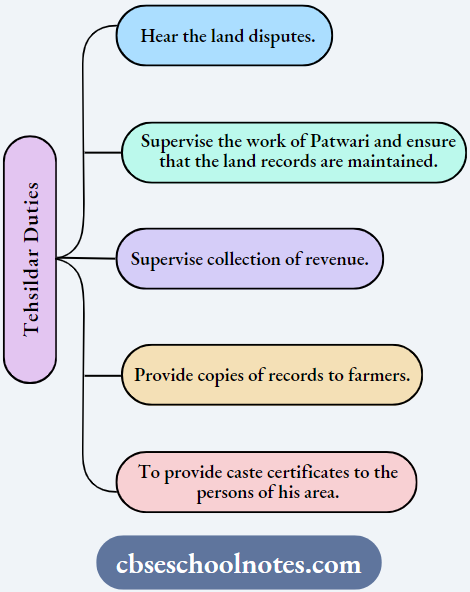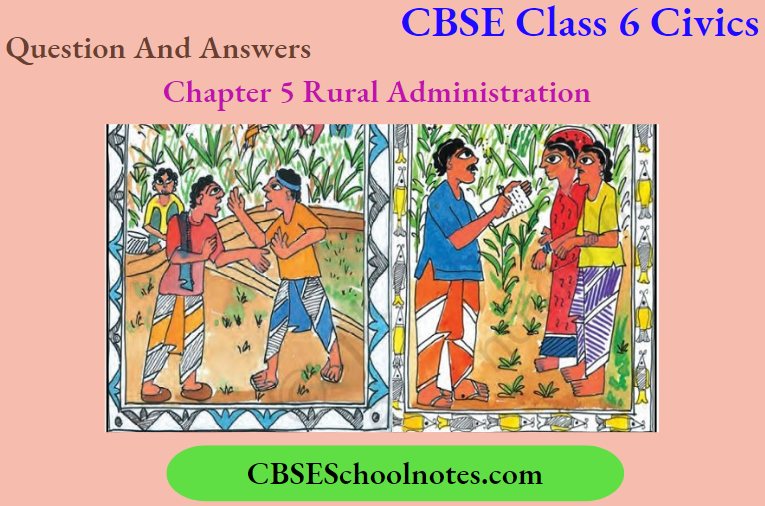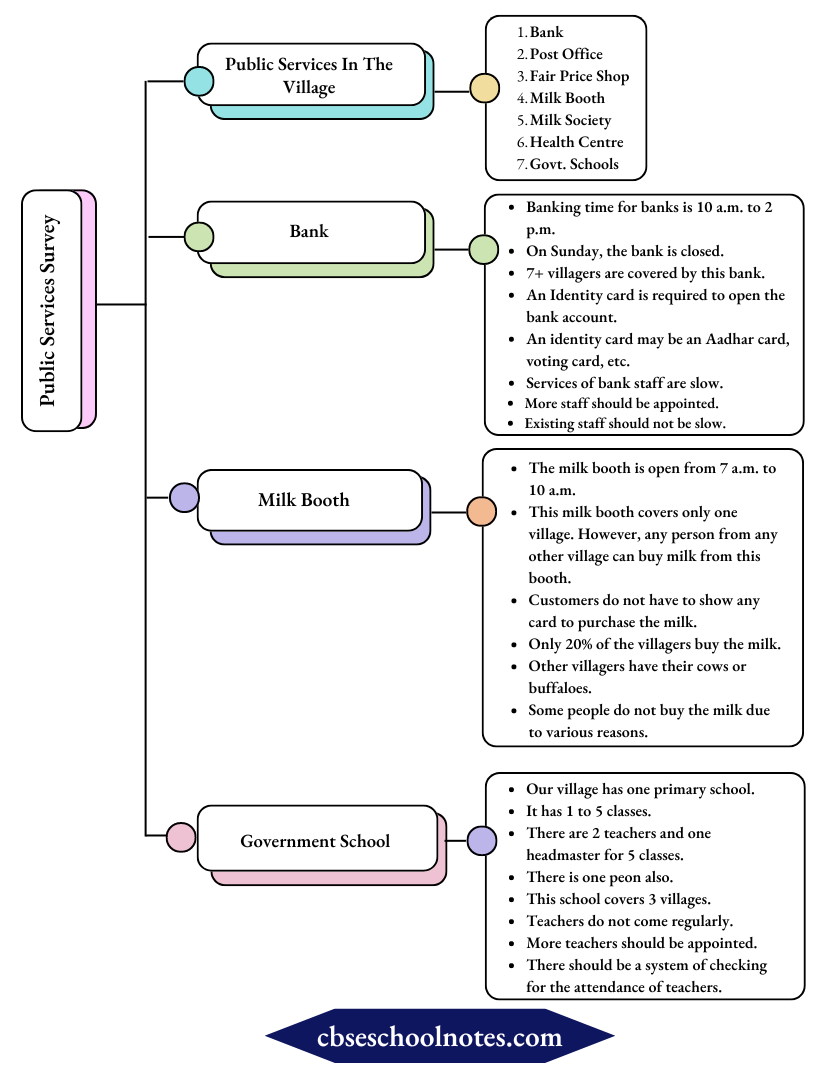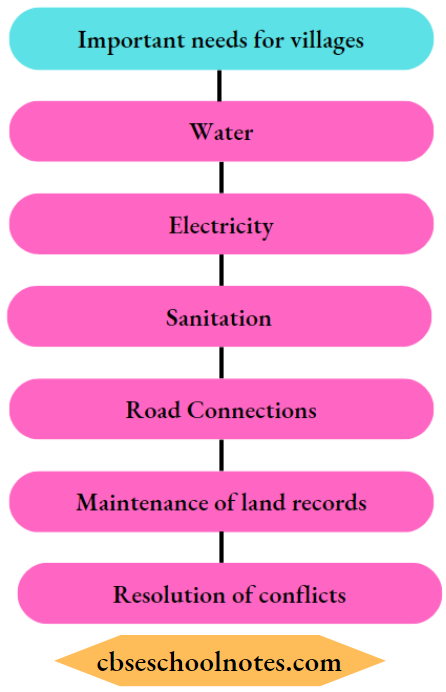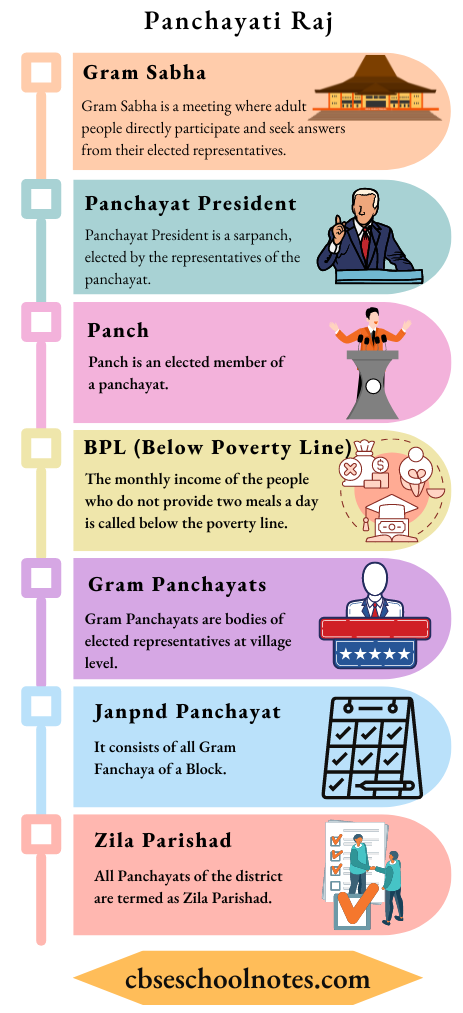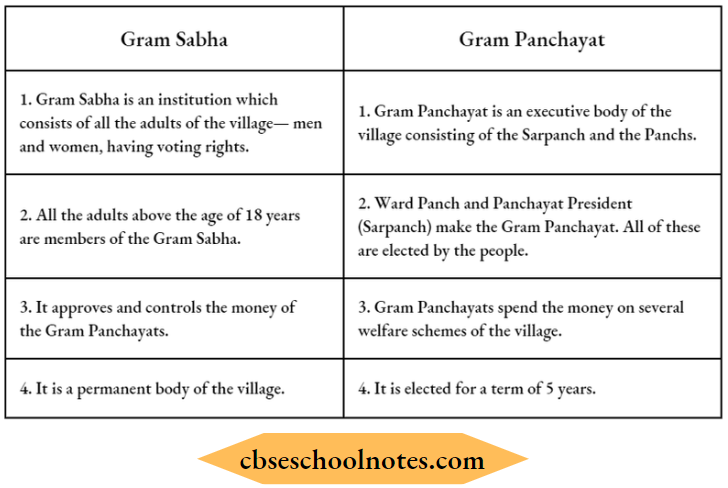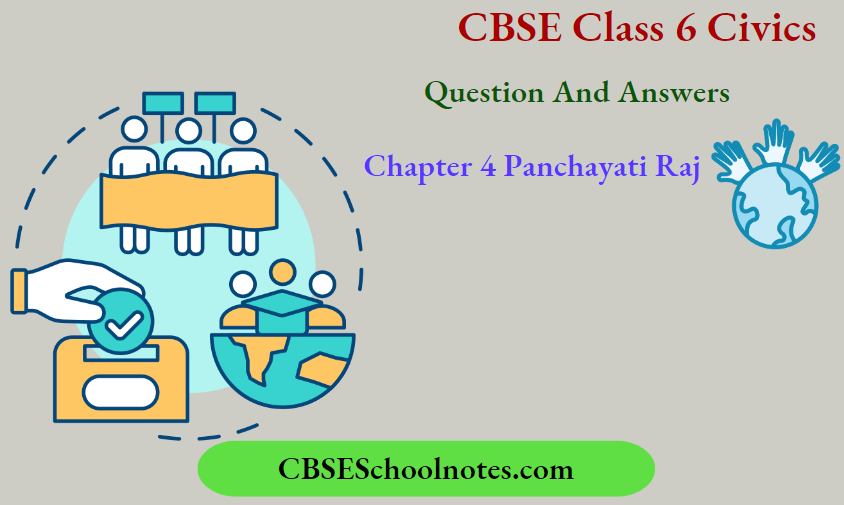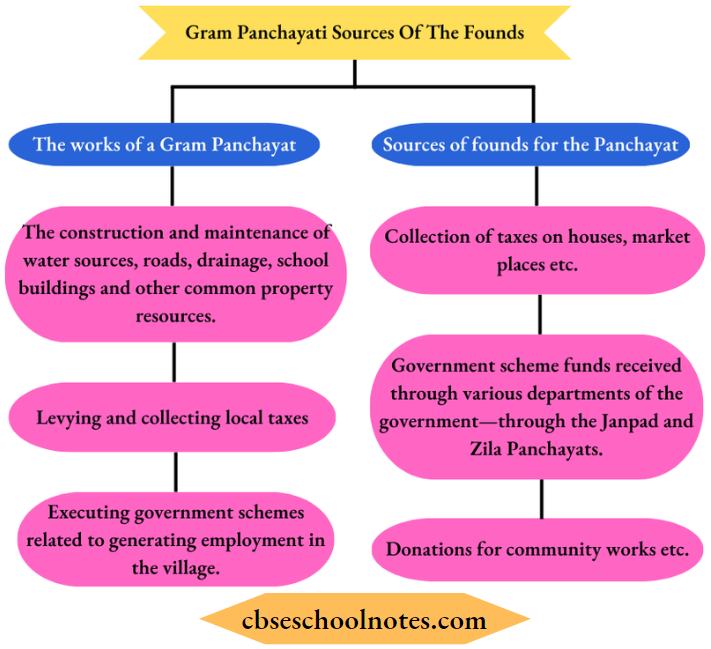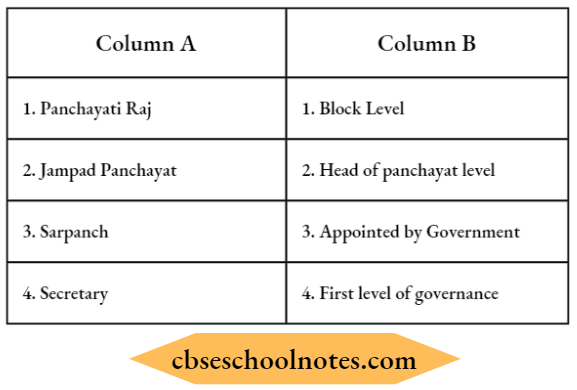Understanding Diversity
Understanding Diversity Facts to Remember
Aspects like looks, behavior, culture, religion, and language; distinguish people from each other.
- Diversity means a lack of uniformity.
- Inequality comes from having different access to resources and opportunities.
- Caste, religion, financial status, education, etc. are different forms of inequalities.
- India is a land of diversities geographical, cultural, religious, and regional.
- People differ in customs, religions, languages, habits, dress, etc.
- Despite these diversities, some similarities unite us.
- During the freedom struggle the whole country was united despite diversities.
- Our flag reminds us of our unity in diversity.
- Our national anthem also reminds us of our unity in diversity.
Understanding Diversity Keywords
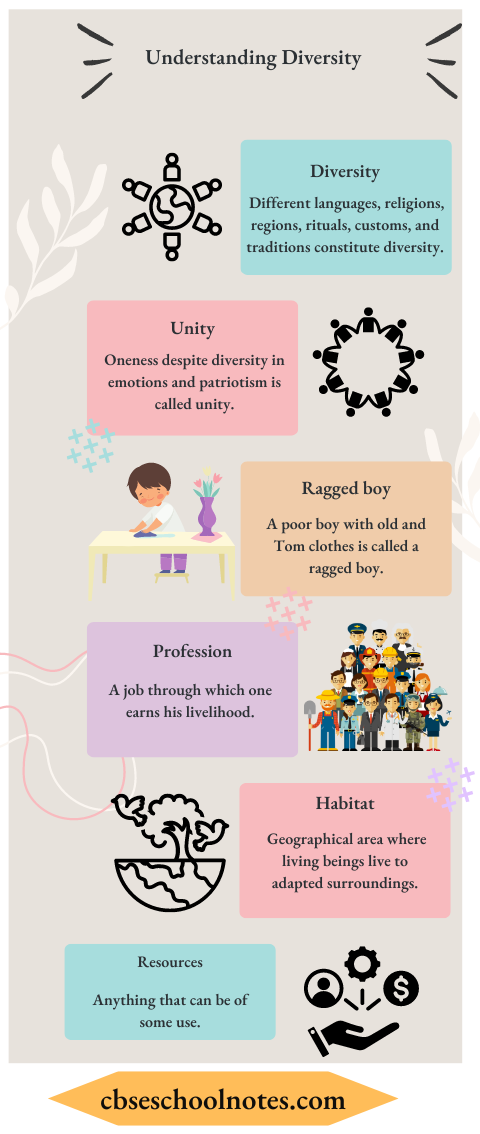
Understanding Diversity Exercises
Question 1. Draw up a list of the different festivals celebrated in your locality. Which of these celebrations are shared by members of different regional and religious communities?
Read and Learn More CBSE Solutions For Class 6 Social Science
Answer:
Different festivals celebrated in our locality which are shared by members of different regional and religious communities:
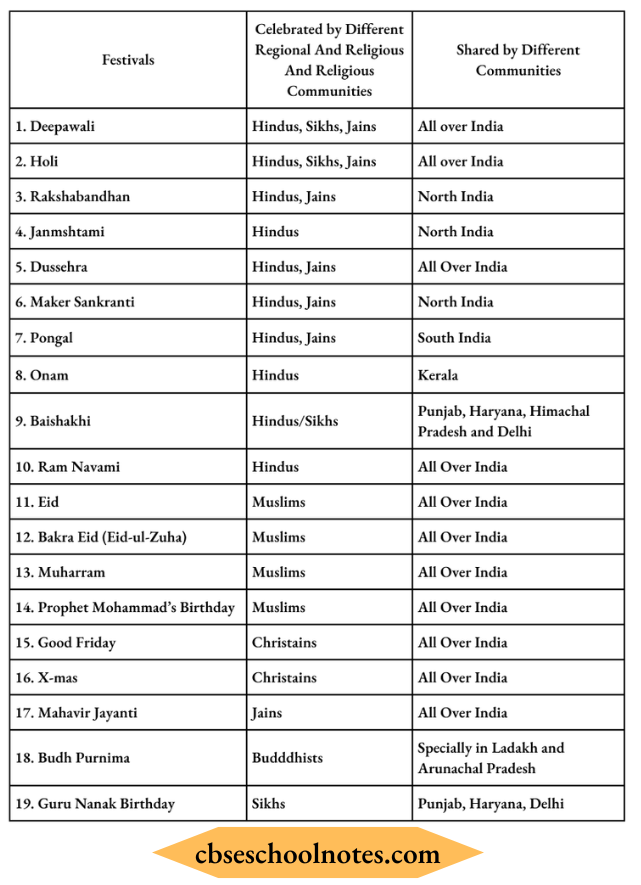
National festivals like Republic Day, Independence Day, or Gandhi Jayanti are celebrated by all.
Most of the Hindu festivals are celebrated by Jains also.
Question 2. What do you think living in India with its rich heritage of diversity adds to your life?
Answer:
Yes, living in India with its rich heritage of diversity adds to our life in the following ways:
- We know different people, their cultures, customs, traditions, and backgrounds. These diverse things add to our life.
- Geographical diversities decide our way of life, our food, our occupations, and many other things.
- South Indian meals like Dosa and idli, add to my meal.
- Punjabi meals like Chhole Bhature, and Lassi, which I take occasionally.
Question 3. Do you think the term ‘unity in diversity’ is an appropriate term to describe India? What do you think Nehru is trying to say about Indian unity in the sentence quoted above from his book The Discovery of India?
Answer:
Yes, we think that the term ‘unity in diversity’ is an appropriate term to describe India.
Diversities:
- Geographical diversities like different physical features, climates, vegetation, rivers, and lakes.
- Cultural diversities like different languages, religions, communities, customs, traditions, festivals, rituals, etc.
Despite all these diversities, there is unity among the people.
- We are one.
- We stood against the British and threw the mighty empire by adopting Ahimsa and other means.
- All the people, belonging to various regions, are one when the country’s interests are involved.
- In natural disasters, we, wholeheartedly, are with them in their sufferings.
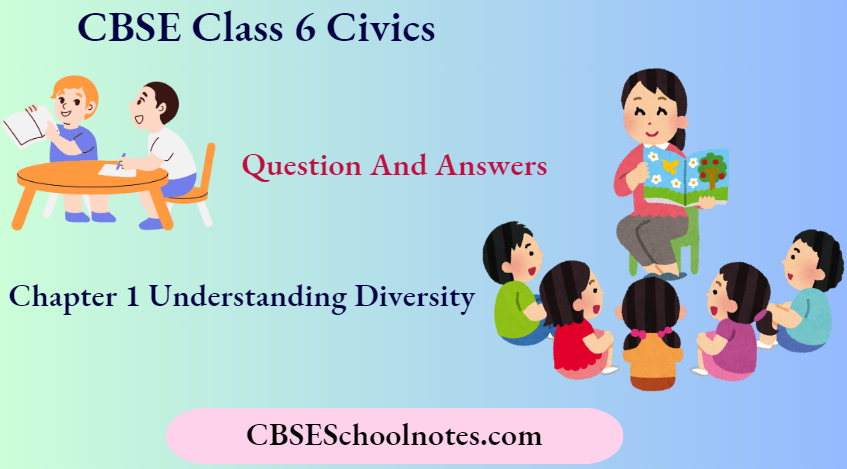
Question 4. Underline the line in the poem sung after the Jallianwala Bagh massacre, which according to you, reflects India’s essential unity.
Answer:
According to me, the following line reflects India’s essential unity:
“O, friend!
The blood of Hindus and Muslims flows together today.”
Question 5. Choose another region in India and do a similar study of the historical and geographical factors that influence the diversity found there. Are these historical and geographical factors connected? How?
Answer:
We choose Assam and Maharashtra in India.
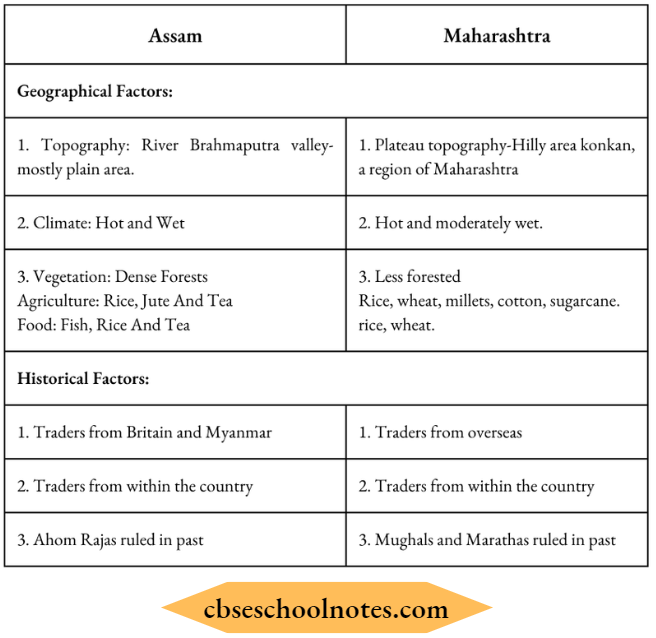
Both areas are diverse but traditionally they are the same.
Question 6. How did India become like this?
Answer:
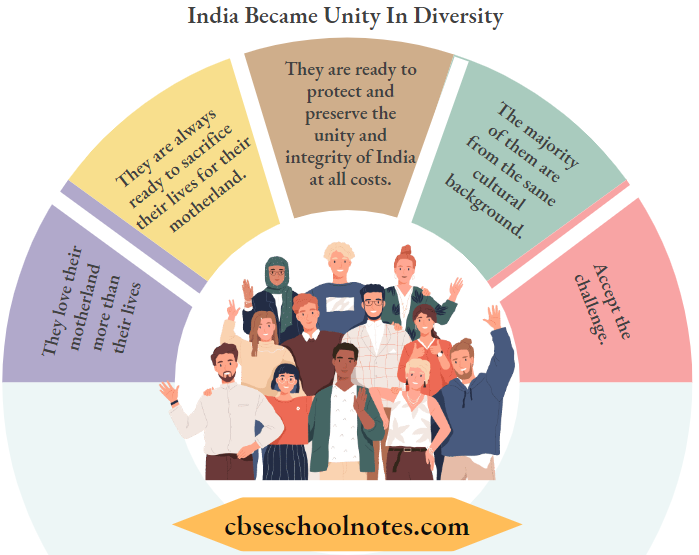
Question 7. Are all kinds of differences a part of diversity?
Answer:
Yes.
Question 8. Can diversity also be a part of unity?
Answer:
Yes, diversity can also be a part of unity.
Question 9. By now you must have recognized the many ways in which you are quite like some of your classmates and other ways in which you are different from them.
Answer:
We are quite like some of our classmates in the following ways:
- We wear the same uniform.
- We speak the same language.
- We like cricket the most.
We are different from others in the following ways:
- We do not like Mahatma Gandhi in the same ways as other boys.
- Our favorite festivals are different.
- We do not study and do homework in the same way as others do.
Question 10. Name three ways in which Samir Ek and Samir Do were different. Did these differences prevent them from becoming friends?
Answer:
Samir Ek and Samir Do were different in the following three ways:
- Samir Ek knew English, and Samir Do spoke in Hindi. He did not attend school.
- Samir Ek is Hindu; while Samir Do is Muslim.
- Samir Ek was a student while Samir Do was a newspaper hawker.
No, these differences did not prevent them from becoming friends; because emotional bonds may bind them together and may make them friends.
Question 11. Make a list of the festivals that might have been celebrated by the two boys.
Samir Ek:
Samir Do:
Can you think of a situation in which you made friends with someone very different from you? Write a story that describes this.
Answer:

Yes, we can think of a situation in which we made Mends with someone very different from us.
Now the students can tell a story of this event themselves.
Question 12. Why do you think Samir Do did not attend school? Do you think it would have been easy for him to attend school if he wanted to? In your opinion is it a fair situation that some children get to go to school and others don’t?
Answer:
- Samir Do did not attend school due to the following reasons:
- He had to earn his livelihood and for his mother.
- His mother does not have sufficient money to send him to school.
- Yes, we think that he could have attended—school though not very easily, for the following reasons:
- After selling newspapers he had enough time to attend school in the evening shift.
- He would have been able to save some rupees to meet our expenses for his studies.
- He had enough time to study at night.
- In my opinion, it is not a fair situation that some children get to go to school and others do not.
- Every child must go to school.
Question 13. Make a list of the food that you have eaten from different parts of India.
Make a list of the languages besides your mother tongue that you can speak at least one or two words of.
Answer:
List of foods, I have eaten, from different parts of India:
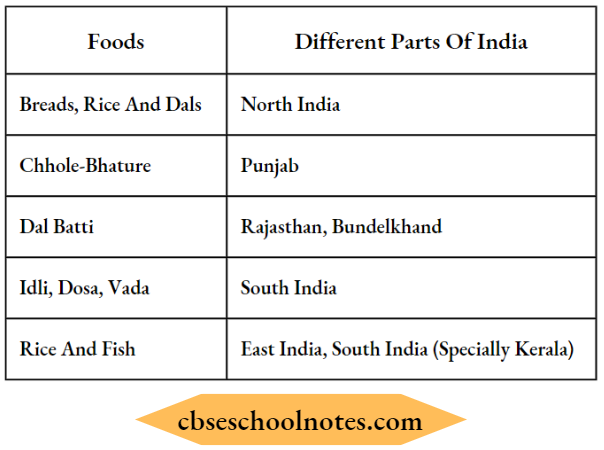
List of languages besides my mother tongue, I can speak:
- Hindi
- Punjabi
- English
I can speak two words of the following languages:
Tamil and Chinese
Question 14. Do you think you will enjoy living in a place like this? List five different things that you would miss the most if you lived here.
Answer:
No.
List of five things I will miss:
- Friends
- Good food
- Relatives
- City environment
- Schools and Colleges.
Question 15. List at least three different ways in which people in India do the following: One of the possible answers has been provided for you already.
Answer:
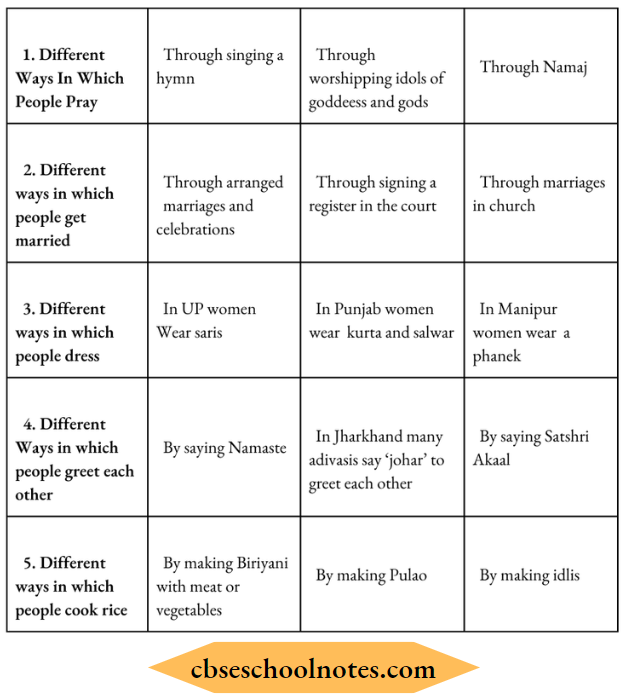
Question 16. Look at the map of India in Atlas and locate Kerala and Ladakh. Can you list three ways in which the different geographical locations of these two regions would influence the following?
- The food people eat:
- The clothes they wear:
- The work they do:
Answer:
Yes, we can list three ways in which the different geographical locations of these two regions (Kerala and Ladakh) would influence:

Question 16. Do you know the story of the Indian Flag?
Answer:
Yes, the story of the Indian Flag is very interesting.
- Initially same flag, being used now, was adopted as the national flag in the Lahore session of 1929, by the Congress. But that flag had Charkha in the center, instead of Chakra which is being used now.
- The national flag underwent several changes
- At last, the present flag came into being.
Question 17. India’s national anthem, composed by Rabindranath Tagore, is another expression of the unity of India. In what way does the national anthem describe this unity?
Answer:
By reading the National Anthem it is revealed that it describes all the regions and people as one and as a part of one nation-India such as:
Punjab, Gujarat, Maratha, Dravid, Utkal, Banga.
Understanding Diversity Very Short Type Questions And Answers
Question 1. How is India a country of diversity?
Answer:
India is a land of diversities because of the following:
- People speak different languages.
- They eat different types of foods.
- They celebrate different festivals.
- They practice different religions.
Question 2. What things are common in India?
Answer:
- National flag
- National song
- National symbols
- Common culture
Question 3. Which religions are practiced in Kerala?
Answer:
Judaism, Islam, Christianity, and Hinduism are practiced in Kerala.
Question 4. What was the importance of our flag during the freedom struggle?
Answer:
The Indian flag was used as a symbol of protest against British rule.
Understanding Diversity Short Type Questions And Answers
Question 1. How was unity in diversity seen during the British rule in India?
Answer:
The people of India have diverse cultures, customs, traditions and backgrounds.
- British took advantage of this diversity and ruled India for 200 years.
- However, the diverse people rose against the British as one nation. They showed unity in diversity and threw their rule from India.
- Men and women from different cultures, customs, and traditions together to oppose the British.
- They took part in the freedom struggle.
- They went to jail together.
- Ultimately they uprooted the British Empire from India and attained freedom in 1947.
Question 2. India has a diverse cultural, religious, and geographical background. In what other terms people are different? Explain with an example.
Answer:
There is a difference between the ‘haves’ and ‘have rugs’ in society.
- Some people have resources, luxuries, and opportunities while others do not have them at all.
- The caste system is another example of social inequality. People are divided based on work done by them. Some people are considered untouchables.
Question 3. From where do people get their ideas for writing stories?
Answer:
People who write stories get ideas from all sorts of different places such as
- Books
- Real life
- Their imagination.
People living in forests chose to write about their fights and friendships with animals.
- Others wrote stories about love and honour describing kings and queens.
- Some people wrote their childhood memories of school and friends.
Question 4. What does Jawahar Lai Nehru say in his book, ‘Discovery of India’ about unity in diversity?
Answer:
Jawahar Lai Nehru says that Indian unity is not imposed from the outside.
- It is something deeper.
- People practice the widest tolerance of beliefs and customs.
- Nehru described the country, as “unity in diversity.”
Understanding Diversity Long Type Questions And Answers
Question 1. How do we explain diversity?
Answer:
Diversity means dissimilarities.
- Dissimilarity may be in food, culture, religion, language, dress, etc.
- In our country, we have a variety of cultures, languages, food, religions etc.
- Diversity occurs when people travel to different destinations within or outside the country.
- Their language, choice of food, music, etc. change. This inter-mixing of cultures and traditions gives rise to diversity.
- Diversity may also occur due to different geographical conditions.
Question 2. Compare life in two different parts of country-Kerala and Ladakh.
Answer:
Life in two different parts of the country:
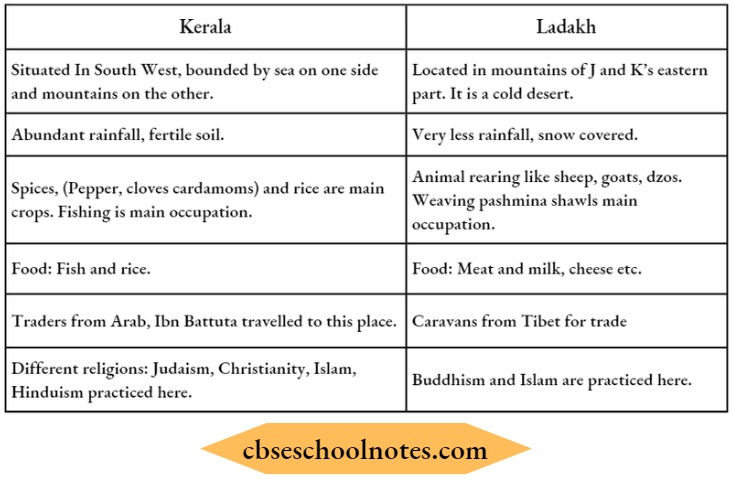
Understanding Diversity Multiple Choice Questions And Answers
Question 1. To which caste does Samir Ek belong?
- Muslim
- Hindu
- Sikh
- None of these
Answer: 2. Hindu
Question 2. Which language does Samir speak?
- English
- Hindi
- Sanskrit
- Tamil
Answer: 2. Hindi
Question 3. What does Samir do?
- Goes to school
- Sell newspapers
- Both (1) and (2)
- None of these
Answer: 2. Sell newspapers
Question 4. From which religion does Samir Do belong?
- Hindu
- Muslim
- Sikh
- Christian
Answer: 2. Muslim
Question 5. On which source do the people of Ladakh depend for drinking water?
- Rivers
- Sea
- Melting of snow
- None of these
Answer: 3. Melting of snow
Question 6. Which region/state produces the pashmina wool?
- Ladakh
- Jamshedpur
- Kolkata
- Delhi
Answer: 1. Ladakh
Question 7. What is dzos?
- A type of yak-cow
- A type of dog
- A type of goat
- A type of cat
Answer: 1. A type of yak-cow
Question 8. Name the religion that reached Tibet via Ladakh.
- Jainism
- Buddhism
- Muslims
- Sikhs
Answer: 2. Buddhism
Question 9. The utensil used for frying cheena-vala is called
- Fry-pan
- Cheenachatti
- Both (1) and (2)
- None of these
Answer: 2. cheenachatti
Question 10. Which is the major product grown in Kerala?
- Wool
- Spices like clove
- Both (1) and (2)
- None of these
Answer: 2. Spices like clove
Question 11. While the British ruled India, women and men from different regions, and cultural faith came together for
- Helping them
- Opposing them
- Both (1) and (2)
- None of these
Answer: 2. opposing them
Understanding Diversity Objective Type Questions And Answers
Question 1. Fill in the blanks with appropriate words:
(1). Pashmina shawls are woven at ___________.
Answer: Himadri
(2). Life of Muslims is described in a travelogue written by ________.
Answer: Vindhyas, Satpuras
(3). Yak-cows are also called __________.
Answer: India, China
(4). _______ and _________ traders visited Kerala and Ladakh.
Answer: 2933 km
(5). Corals are _______ of polyps.
Answer: skeletons.
Question 2. Match the contents of Column A with that of Column B.
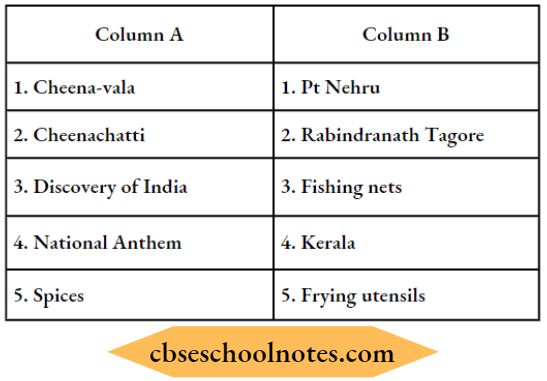
Answer: 1-(d), 2-(e), 3-(c), 4-(a), 5-(b), 6-(f)
Question 3. State whether the following statements are true or false.
(1). Peninsular plateau is triangular.
Answer: True
(2). The Great Indian Desert lies to the east of India.
Answer: False
(3). Andaman and Nicobar Islands are located in the Bay of Bengal.
Answer: True
(4). Sun rises 3 hours earlier in the east (Arunachal Pradesh) than in the west (Gujarat).
Answer: False
(5). Eastern ghats are also known as Sahyadris.
Answer: False

